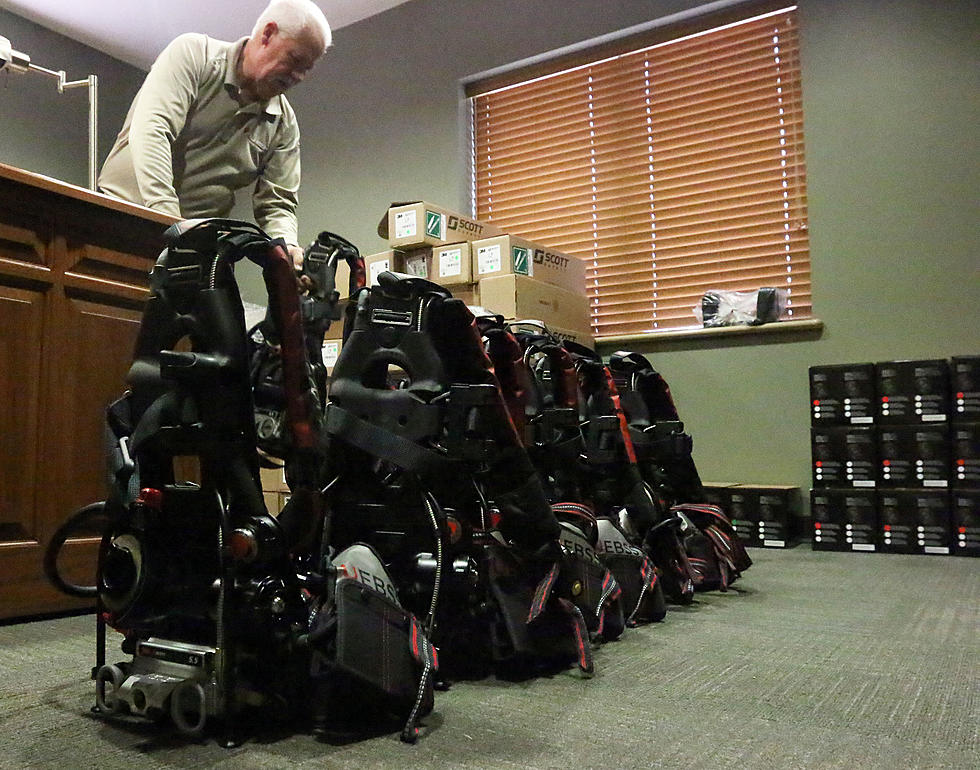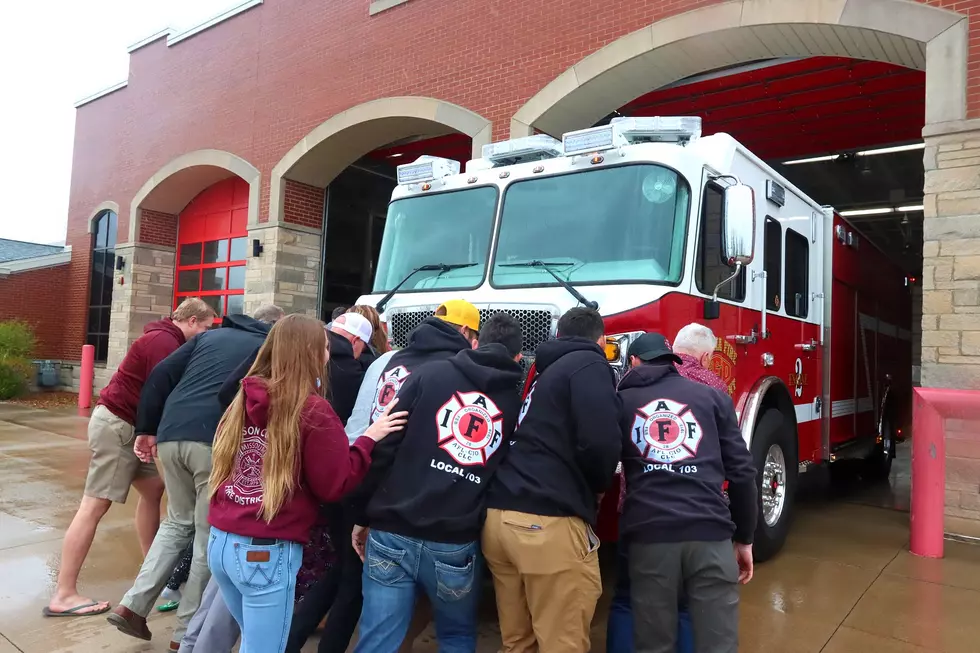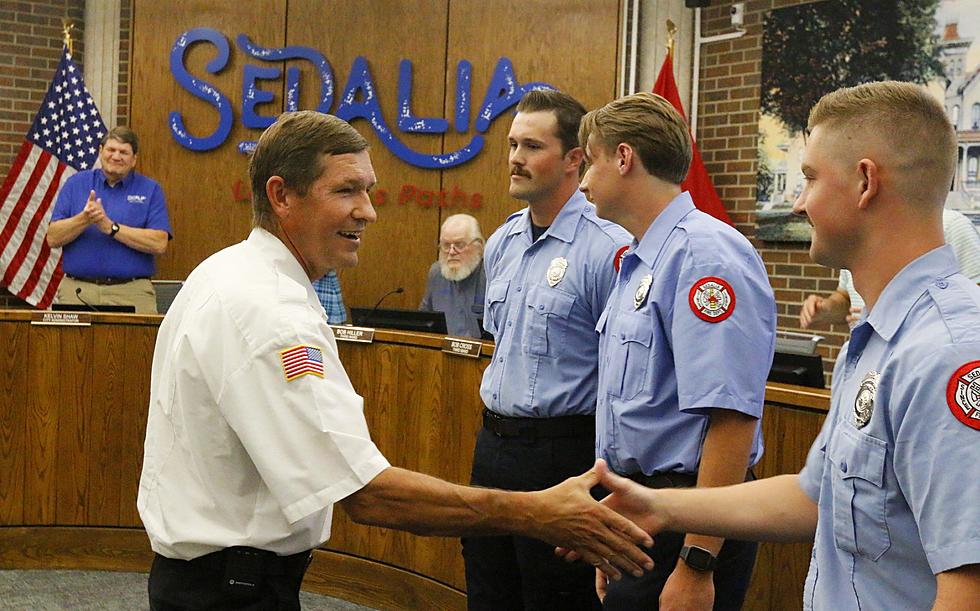
Sedalia Fire Department Receives 26 New Air Packs
The Sedalia Fire Department will soon have 26 brand new air packs in service to use on fire calls.
The air packs, purchased from Feld Fire, Grain Valley, arrived this week accompanied by two Feld Fire reps who were testing the units and conducting fit testing Thursday and Friday.
The high-pitched and very loud sounds of alerts from the air packs filled the SFD Headquarters, located at 2606 W. 16th, as each one was function tested before they go into service the week of Jan. 17. Training for the firefighters for all three shifts by Feld will commence the week of Jan. 10.
Each firefighter was individually fitted for a mask by a Feld Fire rep. The masks seal out the bad air and allows them to breathe only compressed air for a maximum of 45 minutes per bottle. The bottles are then topped off for the next incident via a compressor located at the fire station.
The new air compressor costs around $47,000. The old one at the Hancock station quit working about two years ago. The one at headquarters was the only one still working.
The new air packs were much needed, as the old ones were over 15 years old, according to Sedalia Fire Chief Matt Irwin.
“There are a few things these new air packs do that the old ones didn't,” Irwin said of the additional training. “So they (Feld) want to make sure that we know how to do all of that, how they work, how they function, what to do in case something goes wrong with them.”
Chief Irwin added that he and former Chief Greg Harrell worked for three years to obtain a federal ATF (Assistance To Firefighters) grant to help pay for new air packs.
Irwin noted that Sedalia was not the only fire department to apply for federal funding. Last time he checked, there were around 2600 departments vying for the funds, and there was only enough money available for 800 departments.
“Our grant wasn't fully funded. The total cost for the air packs and the compressor system was just under $260,000. And the federal grant gave us $110,000. That left $150,000 to be paid by the City.
“Of the air packs we had in service at the SFD, we had nine of them were completely out of service. So basically, the federal government funded us to replace those air packs. Problem is, we also had air packs that were going down, and breaking, and we were spending “unbudgeted funds” just to keep those packs in service. So when the grant money came in, Council agreed we would re-set the entire fleet of air packs. So now we have enough air packs to go on all our front line service trucks, and our reserve engine,” Irwin said.
“We are set up very nicely with air packs,” the fire chief said. In the event we have a second fire or mutual aid request, we're ready.
Irwin explained that the new packs will start chirping if the firefighter hasn't moved in 30 seconds. That sound will progressively get louder if no movement is detected, to the point where other firefighters in the area will hear the ear-piercing full-alert sound as well.
A command module with dedicated software will allow the chief or other command personnel to monitor the air packs from a laptop during an incident to ensure safety.
“We can see the air status of all our firefighters who have active air,” Irwin stated, adding that a “pack tracker” with GPS capability will pinpoint the location of any firefighter who goes down or is running out of compressed air.
A rapid intervention team (RIT) pack came with the system, and will be used in the event a firefighter is injured and needs to be extricated. The pack will have an extra regulator and an air hose that feeds back to the firetruck and comes with an extra mask.
“The members of the department are excited for (the new system) as well, because they know if they go down, somebody's coming with this piece of equipment to help them. And they'll be able to find them with the pack tracker. And seconds count,” Chief Irwin said.
Irwin further explained that when command staff and firefighters sit down on the truck, the new air packs will be located behind them, so they can be strapped on immediately. “So when the firefighters come off the truck, the air packs come with them,” he said.
Another advantage of the new air packs versus the old ones is that the hip harness on the new ones flex, which is easier on the shoulders and reduces fatigue. “They're ergonomically correct,” Irwin stated.
More From Mix 92.3










